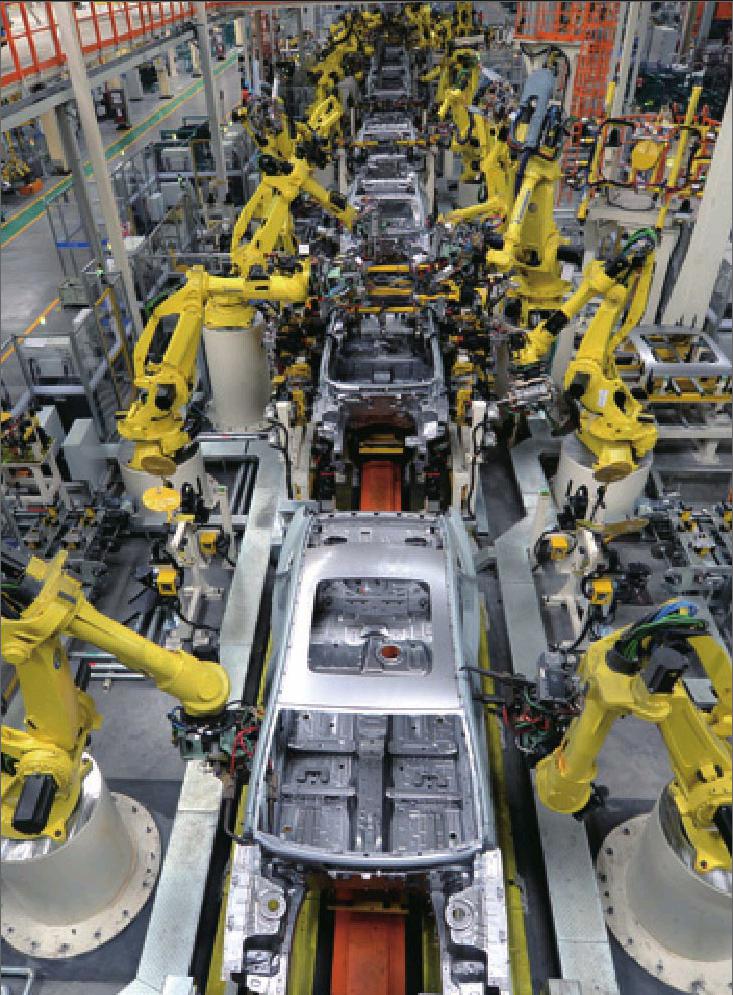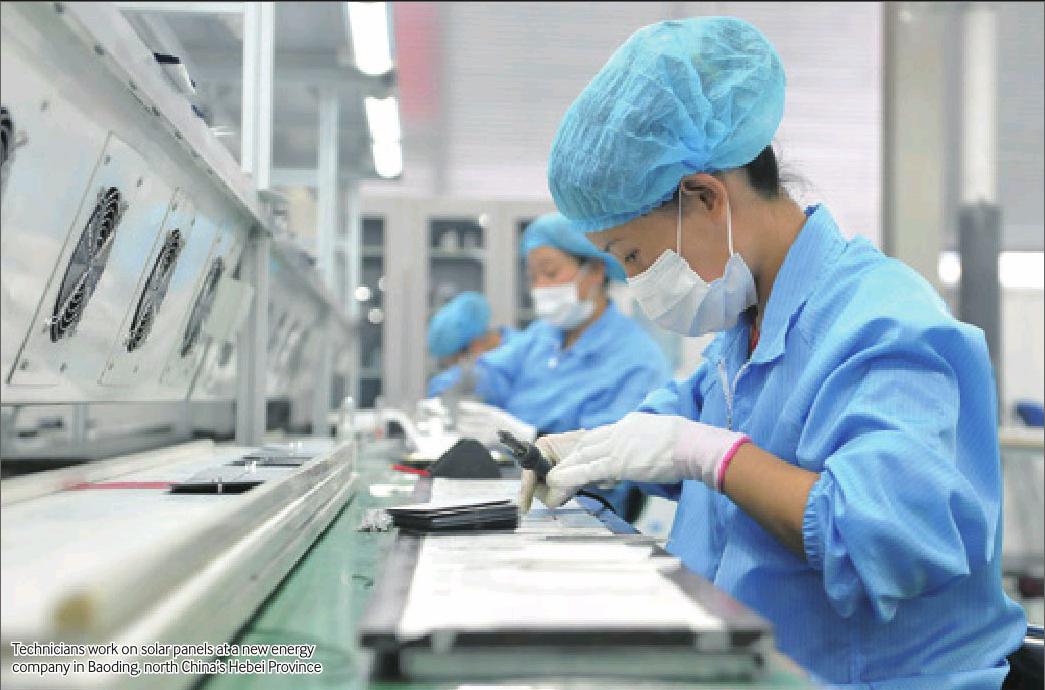MAPPING OUT SUCCESS
2015-12-01ByYinPumin
By+Yin+Pumin


On October 26-29, the Fifth Plenary Session of the 18th Communist Party of China(CPC) Central Committee was held in Beijing. There the committee approved proposals for the 13th Five-Year Plan (2016-20) for the national economic and social development and laid out institutional Party reform plans to guarantee more effective governance.
“The 13th Five-Year Plan period will be a key phase in realizing the first of two important goals set by the 18th CPC National Congress,”said Xu Hongcai, Deputy Director of the Information Department of the China Center for International Economic Exchanges.
The 18th CPC National Congress held in November 2012 identified two important centenary goals for the nation: building a moderately prosperous society in all respects by the time the CPC celebrates its centenary in 2021, and becoming a modernized socialist country that is rich, strong, democratic, culturally advanced and harmonious by the time the Peoples Republic of China celebrates its 100-year anniversary in 2049.
Chinas Five-Year Plans have been drawn up since 1953 in order to formulate strategies for overall economic and social development, setting growth targets and defining development policies. The 13th Five-Year Plan aims at doubling Chinas GDP and per-capita income by 2020 relative to 2010 figures.
After taking into account the proposals made at the CPCs fifth plenary session, a final plan will be deliberated upon and ratified by the annual session of the National Peoples Congress, Chinas top legislature, scheduled for March 2016.
Concerning growth
The 13th Five-Year Plan will work to promote peoples well-being, strengthen economic construction and the rule of law in the market economy, while further opening up to the outside world in all aspects, according to a statement released after a meeting of the Political Bureau of the CPC Central Committee in July.
According to the communiqué released on October 29 following the four-day plenary meeting, China will target “medium-high economic growth” for the next five years, starting in 2016.
Many analysts believe a lower-than-average annual growth target of 6.5 percent is acceptable and will be attainable over the next five years, given looming downward pressure and ongoing economic restructuring.
Chang Xiuze, a researcher with Tsinghua University and economist with a think tank under the National Development and Reform Commission(NDRC), said policymakers should set a bottom line of 6.5-percent annual growth for 2016-20 based on the current economic circumstances.
The previous five-year plan (2011-15) set an average annual growth target of around 7 percent, which looks likely to be fulfilled by the end of this year. Between 2011 and 2014, the economy expanded at an annual rate of 8 percent.
The Chinese economy expanded 6.9 percent year on year in the third quarter of 2015, the first time the quarterly growth rate has dropped below 7 percent since the second quarter of 2009, but still led major world economies.
Chang attributed the slower growth to a shift in economic engines, a shrinking work force and pollution control, claiming that China can no longer count on exports, investment and the property sector to drive its economy.
He also said that slowing global recovery, the intrusion of sovereign debt problems, weak external demand and rising trade protectionism will challenge export-oriented economies, while investment—the old stalwart economic remedy—is falling and becoming less effective in stimulating growth. Chang added that the property sector, despite recent gains, is far from complete recovery.
He forecast that a falling working population, likely to see annual declines of 0.3 percent over the next five years, will mark the end of the demographic dividend and weigh heavily on the slowing economy. Chang also counted environmental pollution as a factor that could affect economic expansion.
While recognizing headwinds, the economist nonetheless believes China is capable of attaining 6.5-percent annual growth over the next half decade.
According to him, Chinas accelerating urbanization will foster domestic demand. He expects urban residents to account for 60 percent of the total population by 2020, up from 54.77 percent last year. The opening up of the economy, including the Belt and Road Initiative, the Asian Infrastructure Investment Bank and various free trade agreements, will, in his view, provide fresh momentum for Chinas economy.
Additionally, China has set a goal to lift 70 million people above the poverty line by 2020, Chinese President Xi Jinping said while attending a national poverty alleviation and development forum in Beijing in mid-October.
As of the end of 2014, 70.17 million people in rural areas were living below the national poverty line of 2,300 yuan ($375.2) in terms of annual income.
Defining the ‘new normal
Observers noted that the just-concluded plenary session focused on defining an eco- nomic “new normal” for the next five years.
The “new normal” is characterized by a shift from the previous high speed to a medium-to-high speed growth and upgrading economic structure, Xi was quoted as saying by Xinhua News Agency in November of last year.
After the countrys third quarter growth recorded 6.9 percent, officials reiterated that the government will not attempt to defend a certain growth rate as an end in itself, but will instead focus on quality growth.
At the plenum, the CPC Central Committee again resolved to prioritize quality and efficient development in the next five years.
Despite weaker performance by traditional industries such as steel and cement production, technology-intensive industries and sectors related to consumption and environmental protection are stepping onto the fast track. The hi-tech sector grew 10.4 percent year on year in the first nine months, outpacing Chinas general industrial output by 4.2 percentage points.
Chinas economic structure has also been improving with the rise of the tertiary industry, which is more efficient and energysaving, and can provide more jobs. In the first three quarters, added value in the service sector accounted for 51.4 percent of the GDP, up 2.3 percentage points from the same period of last year.
The sectors growth has helped ease the countrys reliance on resources and energy, and facilitated the transformation toward a more technology- and innovation-driven economy.
The four-day session put innovation front and center for Chinas development in the next half-decade.
With governmental encouragement and support, innovation and entrepreneurship are being embraced as a source of competi- tive advantage, with meaningful advances emerging in fields such as mobile apps, consumer electronics and renewable energy.
The result has been a startup boom in China, with an average of 30,000 new companies registering every day in the first three quarters of 2015.
Ecological civilization
According to the communiqué released on October 29, the development of an ecological civilization is also one of the highlights of the new five-year plan.
Following a series of measures in the same vein adopted in recent years, China issued the national air pollution control action plan in 2013 and a water pollution action plan earlier this year. These plans are in addition to an anti-pollution campaign launched in March. Xia Guang, Director of the Policy Research Center for Environment and Economy at the Ministry of Environmental Protection, said this makes the 13th FiveYear Plan the beginning of a protracted and unified campaign against pollution, with relevant government departments making coordinated efforts to reduce emissions.
For example, the Ministry of Finance has regulated the allocation of special funds for related projects, and the Ministry of Housing and Urban-Rural Development has outlined projects to clean up rivers in cities, Xia said.
Eco-civilization development has attracted attention from the countrys policymakers, with the State Council, Chinas cabinet, issuing the first national strategy to promote ecocivilization on May 5.
It lists 10 major goals, including reduction of pollutant emissions and compensation for losses, and states that government officials will be held responsible for pollution beyond their terms of office.
The guidelines were issued in an attempt to improve the countrys environment. The document vows to achieve major progress in this area by 2020, such as reducing carbon dioxide emissions by 40 to 45 percent from 2005 levels.
Yang Chunping, an expert on ecological development at the Institute of Economic System and Management under the NDRC, said that in the overall road map, several stipulations exist that require innovative efforts to meet the goals. One such measure is the natural-assets balance sheet, which allows authorities to possess a clearer picture of all natural resources, the changes taking place, and challenges to preserve them.
Tightening Party discipline
Apart from outlining a more detailed and intricate policy-making process for a better-off society, the proposed 13th Five-Year Plan also incorporates a modern system to combat corruption and ensure violators are accordingly punished.
“Carrying out institutional construction of the Party is in line with the nations process of modernization. All of the reform measures also require political reform and Party construction to support the nations development,” said Cai Zhiqiang, a professor with the Party School of the CPC Central Committee.
The fifth plenary session also issued announcements detailing punishments for certain senior corrupt officials.
Among them was Ling Jihua, a former CPC Central Committee member. He was expelled from the Party in July and has since been put under criminal prosecution for bribery.
More than 100 officials at ministerial level or above have been brought down in the anti-graft campaign since 2012, including 18 members or alternate members of the CPC Central Committee, Chinas top leadership, The Beijing News reported.
Just before the plenary session, the CPC Central Committee published new rules on clean governance and sanctions for those who violate the Partys code of conduct.
The two new regulations, adopted at a meeting of the Political Bureau of the CPC Central Committee on October 12, updated existing rules not in keeping with the Partys expectations following the launch of its anticorruption drive.
Zhuang Deshui, Deputy Director of the Research Center for Government Integrity Building at Peking University, who participated in the revision process, said that the rules have removed the articles which overlap between Party discipline and the Criminal Law.
“For example, corruption, bribery and embezzlement of public funds have been deleted from the rules because those crimes are part of the Criminal Law. Any violations of the law also mean the violations of Party discipline,”Zhuang said.
Future Party supervision will focus on violators of Party discipline, rather than lawbreakers, Zhuang claimed.
The new rules on clean governance are, for the first time, applicable to all CPC members, according to the new regulations.
The previous rules released in 2010 included 53 articles on forbidden behavior, while the new eight-article regulation mainly concerns itself with a moral ethical code that Party members must adhere to.
Gao Bo, a research fellow with the Chinese Academy of Social Sciences, noted that the new rules require officials not only to be honest in politics but also to concentrate on cultivating their own character and running a harmonious family.
The new rules on punishments have been dubbed by many to be the most comprehensive and strictest since the opening up and reform drive first began more than three decades ago.
